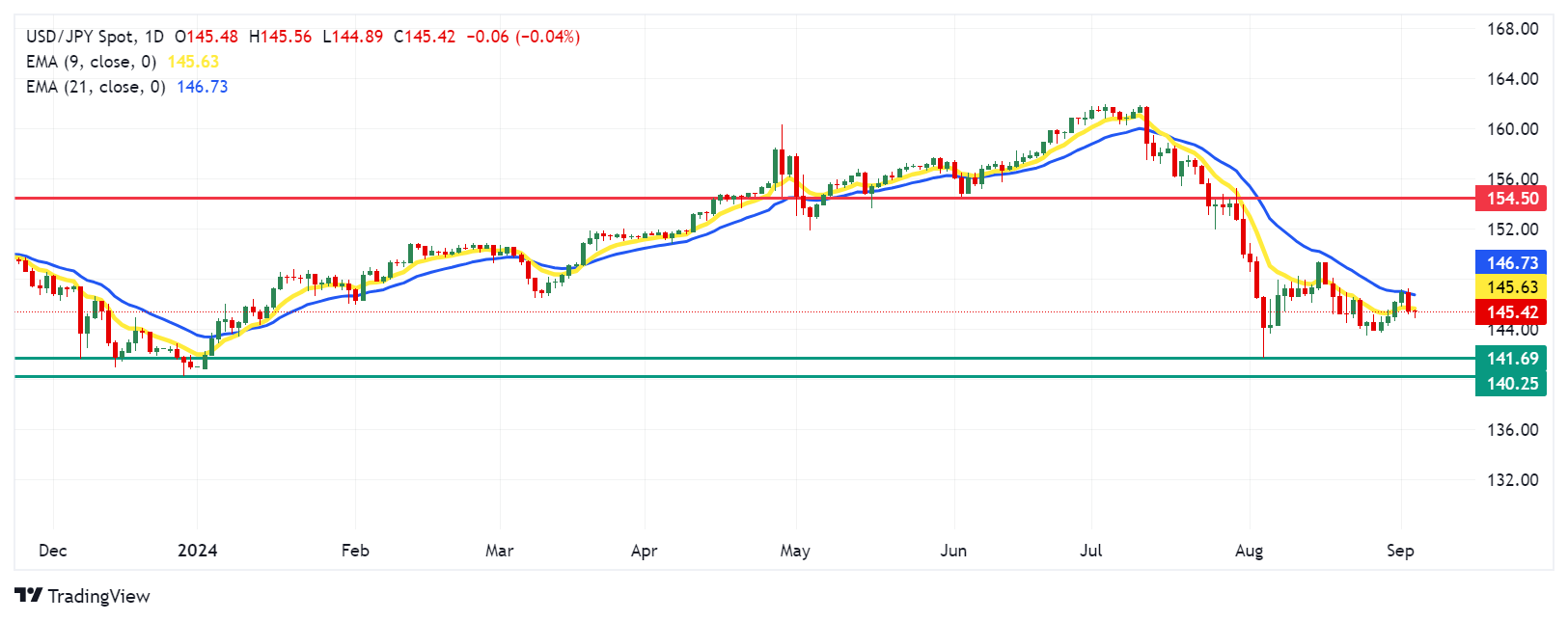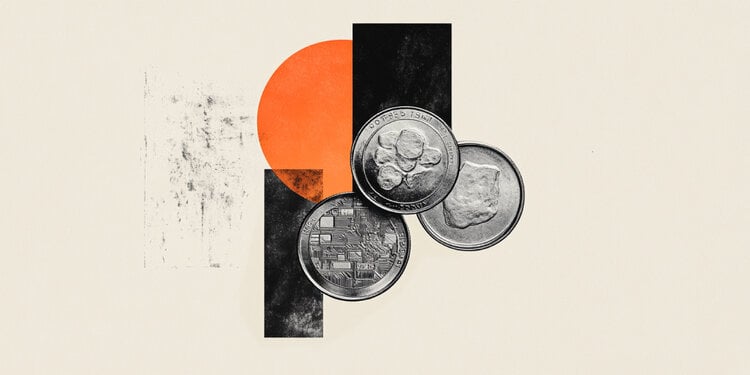- Japanese Yen rises following Jibun Bank Services PMI on Wednesday.
- Yoshimasa Hayashi of Japan is urgently monitoring domestic and international market developments.
- US Dollar Holds Firm as Traders Approach Caution Ahead of US Jobs Data
The Japanese Yen (JPY) continues to strengthen against the US Dollar (USD) following the release of Jibun Bank’s services PMI data on Wednesday. The index was revised to 53.7 in August from an initial estimate of 54.0. Although this marks the seventh consecutive month of expansion in the services sector, the latest figure remains unchanged from July.
Japan’s Chief Cabinet Secretary Yoshimasa Hayashi said on Wednesday that he is “closely monitoring domestic and international market developments with a sense of urgency.” Hayashi stressed the importance of carrying out fiscal and economic policy management in close coordination with the Bank of Japan (BoJ). He also stressed the need for a calm assessment of market movements, but declined to comment on daily stock fluctuations.
The US Dollar is supported as traders remain cautious ahead of US employment data, particularly Non-Farm Payrolls (NFP) for August. This data may provide further insight into the possible timing and scale of Federal Reserve (Fed) rate cuts.
Daily Market Wrap: Japanese Yen Extends Gains on BoJ’s Bolivarian Tone
- The US ISM manufacturing PMI rose to 47.2 in August from 46.8 in July, falling short of market expectations of 47.5. This marks the 21st contraction in US manufacturing activity in the past 22 months.
- On Tuesday, Japan announced plans to allocate ¥989 billion to fund energy subsidies in response to rising energy costs and resulting pressures on the cost of living.
- The U.S. Bureau of Economic Analysis reported on Friday that the headline Personal Consumption Price Index (PCE) rose 2.5% year-over-year in July, matching the previous reading of 2.5% but falling short of the 2.6% estimate. Meanwhile, the core PCE, which excludes volatile food and energy prices, rose 2.6% year-over-year in July, consistent with the previous reading of 2.6% but slightly below the consensus of 2.7%.
- Tokyo’s Consumer Price Index (CPI) rose to 2.6% year-on-year in August, up from 2.2% in July. Core CPI also rose to 1.6% year-on-year in August, compared with 1.5% previously. In addition, Japan’s unemployment rate unexpectedly rose to 2.7% in July, versus the market estimate and 2.5% in June, marking the highest unemployment rate since August 2023.
- Federal Reserve Bank of Atlanta President Raphael Bostic, a prominent hawk on the FOMC, indicated last week that it may be “time to act” on rate cuts due to a further slowdown in inflation and a higher-than-expected unemployment rate. FXStreet’s FedTracker, which measures the tone of Fed officials’ speeches on a dovish-to-hawkish scale from 0 to 10 using a custom AI model, rated Bostic’s words as neutral with a score of 5.6.
- The U.S. Gross Domestic Product (GDP) grew at an annualized rate of 3.0% in the second quarter, exceeding both the expected and prior growth rate of 2.8%. In addition, Initial Jobless Claims showed that the number of people applying for unemployment benefits fell to 231,000 in the week ending August 23, from 233,000 previously and slightly below the 232,000 expected.
- Japanese Finance Minister Shunichi Suzuki said last week that exchange rates are influenced by a variety of factors, including monetary policies, interest rate differentials, geopolitical risks and market sentiment. Suzuki added that it is difficult to predict how these factors will impact exchange rates.
Technical Analysis: USD/JPY reacts to 21-day EMA, further bearish pressure expected
The USD/JPY is trading around 145.40 on Wednesday. An analysis of the daily chart shows that the nine-day exponential moving average (EMA) is below the 21-day EMA, signaling a bearish bias in the market. Additionally, the 14-day Relative Strength Index (RSI) is holding below 50, further confirming that the bearish trend is still in force.
For the USD/JPY pair, support can be found around the seven-month low of 141.69, recorded on August 5, with the next key support level near 140.25.
On the upside, the pair could find resistance first at the nine-day EMA around 145.63, followed by the 21-day EMA at 146.73. A break above this level could pave the way towards the psychological barrier of 150.00, with added resistance at the level of 154.50, which has turned from support to resistance.
USD/JPY: Daily Chart
Japanese Yen PRICE Today
The table below shows the Japanese Yen (JPY) exchange rate against major currencies today. The Japanese Yen was the strongest currency against the Australian Dollar.
| USD | EUR | GBP | JPY | CAD | AUD | NZD | CHF | |
|---|---|---|---|---|---|---|---|---|
| USD | -0.10% | 0.00% | -0.03% | -0.12% | 0.11% | 0.07% | -0.18% | |
| EUR | 0.10% | 0.13% | 0.08% | 0.01% | 0.23% | 0.21% | -0.08% | |
| GBP | -0.01% | -0.13% | -0.04% | -0.13% | 0.11% | 0.11% | -0.21% | |
| JPY | 0.03% | -0.08% | 0.04% | -0.09% | 0.15% | 0.11% | -0.16% | |
| CAD | 0.12% | -0.01% | 0.13% | 0.09% | 0.22% | 0.22% | -0.08% | |
| AUD | -0.11% | -0.23% | -0.11% | -0.15% | -0.22% | -0.02% | -0.29% | |
| NZD | -0.07% | -0.21% | -0.11% | -0.11% | -0.22% | 0.02% | -0.29% | |
| CHF | 0.18% | 0.08% | 0.21% | 0.16% | 0.08% | 0.29% | 0.29% |
The heatmap shows percentage changes of major currencies. The base currency is selected from the left column, while the quote currency is selected from the top row. For example, if you choose the Japanese Yen from the left column and move along the horizontal line to the US Dollar, the percentage change shown in the chart will represent the JPY (base)/USD (quote).
Japanese Yen FAQs
The Japanese Yen (JPY) is one of the most traded currencies in the world. Its value is determined broadly by the performance of the Japanese economy, but more specifically by the policy of the Bank of Japan, the spread between Japanese and US bond yields, and risk sentiment among traders, among other factors.
One of the Bank of Japan’s mandates is currency control, so its moves are key to the Yen. The BoJ has intervened directly in currency markets on occasion, usually to lower the value of the Yen, although it often refrains from doing so due to political concerns of its major trading partners. The BoJ’s current ultra-loose monetary policy, based on massive stimulus to the economy, has caused the Yen to depreciate against its major currency peers. This process has been exacerbated more recently by a growing policy divergence between the BoJ and other major central banks, which have opted to sharply raise interest rates to combat decades-old levels of inflation.
The Bank of Japan’s stance of maintaining an ultra-loose monetary policy has led to an increase in policy divergence with other central banks, in particular with the US Federal Reserve. This favours the widening of the spread between US and Japanese 10-year bonds, which favours the Dollar against the Yen.
The Japanese Yen is often considered a safe haven investment. This means that in times of market stress, investors are more likely to put their money into the Japanese currency due to its perceived reliability and stability. In turbulent times, the Yen is likely to appreciate against other currencies that are considered riskier to invest in.
Source: Fx Street
I am Joshua Winder, a senior-level journalist and editor at World Stock Market. I specialize in covering news related to the stock market and economic trends. With more than 8 years of experience in this field, I have become an expert in financial reporting.








